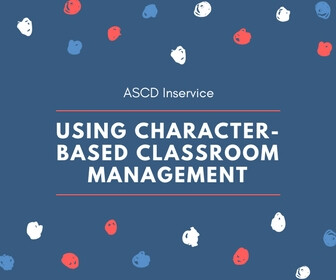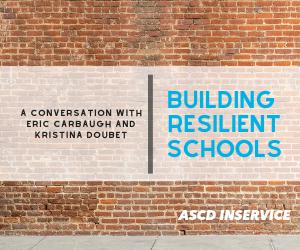My 23-year-old daughter recently said to me, "You know, in grad school and in job orientations, no one tells you how to deal with all the interpersonal stuff [that comes up in a school]. Like the stuff you did all the time in your job. You were constantly calling people down in your office. How did you do that? I need some SEL for adults."
She's a teaching assistant at a local elementary school and is working toward a master's degree in educational therapy. While her comments could be attributed to inexperience, I suspect she has a great point: it really does feel like no one teaches educators about the hardest part of any job—figuring out how to cope with the uncomfortable moments, misunderstandings, and awkward feelings that can arise from interactions with others.
No one teaches educators about the hardest part of any job—figuring out how to cope with the uncomfortable moments.
While educators tend to value SEL for children—as evidenced by the preponderance of programs, articles, and research studies on the topic—I haven’t seen specific classes about SEL, at least in my daughter’s graduate program, that focus on grappling with the big emotions that arise in school settings for kids or adults.
When my daughter mentioned my former job—I was the assistant principal of a middle school for 14 years—she was saying the quiet part of my responsibilities aloud: helping adults and students manage their emotions while keeping my own in check. These skills weren’t listed in the job description but playing the role of "mediator" took up a significant chunk of each day. While I had a background in psychology, most of my skills came from experience and reflection. And the stakes were high: if I failed to comprehend the scope of a situation or act with compassion, I increased the possibility of deepening the emotional difficulties experienced by students, families, and teachers.
3 Tips for Compassionate Conversation
When I first started as an assistant principal, I had some experience in navigating interpersonal conflict as a dean—but I soon learned that being an assistant principal requires next-level SEL skills. In the interest of helping other leaders not struggle as much as I did, I've created a few tips on "SEL for adults.” These are strategies I employed myself and that I shared with the teachers at my school. Whether you are a teacher or administrator, the following advice should help you navigate complex interactions as you encounter the students, families, and colleagues who bring both joy and consternation to your day.
Tip #1: Listen...like, really listen.
Even if you already do this, deepening your listening can help others feel heard. Consider: How many times do you interrupt the person speaking to add your thoughts? How often do you try to "fix" whatever problem is presented to you? Most of the time, people don't want fixing. They want acknowledgment and compassion. Nodding and making quiet sounds of affirmation—“mmm hmm,” “ah,” or “I see”—as you take notes lets the speaker know that you are carefully attending to their words.
Check your understanding of what was said by repeating it to the person—“You are concerned that your child is being bullied and you are afraid of what the outcome may be if the bullying continues unchecked”—and allowing them to correct your misunderstandings. This step is important because it is validating for the speaker to hear their words echoed by you and it is also critical that they have the opportunity to edit those words.
Then, wait. Silence tends to make us uncomfortable, so we rush to fill it with the sound of our own voices—but check that impulse. People need time to think and reflect. They can't do that when you're talking, so wait for them to realize what they wish to say next. They may ask for your help, or they may think of a solution on their own.
If you can remain calm, unruffled, and present in the moment, your demeanor will help the other person relax—all without words.
WARNING: In the face of strong, unpleasant emotion, simply echo what the person said, as in, "I heard you say you are really angry." Then, wait! Don't try to help them be un-angry. People must feel their feelings, and your voice won't make that process occur any faster. In fact, you're just as likely to make them angrier. However, if you can remain calm, unruffled, and present in the moment, your demeanor will eventually help the other person relax—all without words. There's science behind this! It's a concept known as "co-regulating" (see the Polyvagal Theory). This is what I mirrored in my office with all those upset people my daughter referenced. The idea is that one’s emotions and physiology can be guided to a more tranquil state in the presence of a relaxed person. Consider how, when you’re distraught, you naturally seek the company of a person who makes you feel better.
Tip #2: Don't get on that ride.
Understand that you don't have to go along for the ride when people are distressed. Just as happiness is contagious, negativity and anger are contagious as well. When you're aware of this, you can make a choice to remain as neutral as possible. Again, if you stay calm, your chilled out approach can help those around you chill out, too (co-regulation in action).
Everyone has their own strategies for maintaining equanimity, but here are mine:
- I tell myself: This is not about me, even when someone is complaining about me to my face, and instead prioritize the experience of the person to whom I am speaking. Of course, I take every concern very seriously and reflect on how to solve the problem, but at the same time, I endeavor not to take on the emotional weight of the speaker so that my decisions aren’t governed by sadness, anger, or fear. While I can't control other people’s emotions, I can help the situation by remaining calm.
- I remind myself: I don’t know the full story yet. There is more here yet to be uncovered. I can recognize the validity of the speaker’s emotions and at the same time anchor the moment in a neutral space so I don’t react with defensiveness or pique.
- Lastly, I ask myself: How can I be more compassionate and understanding right now? This question reminds me to lead with empathy rather than ire or anxiety.
The only way self-talk works is if you practice it all the time. You also need to believe it works for it to be effective.
Compassion means allowing other people to tell you what they need instead of jumping in with your thoughts. Listen. Wait patiently.
Of course, occasionally, the person you're listening to is mad at you, and what they really want is an explanation of your actions, or a reaction, or possibly revenge. It's even more important to stay level-headed in these moments. Saying, “That must be difficult. I’m sorry you’re angry,” acknowledges the other person’s feelings and indicates that you are listening. Then, wait for them to relax a bit, which you can observe by noticing when their breathing slows, their shoulders drop, or their fists unclench.
Once the person is in a calm space, ask, “How can I help you right now?” Don’t volunteer ideas . . . compassion means allowing other people to tell you what they need instead of jumping in with your thoughts. Listen. Wait patiently. You don’t need to speak right away.
Tip #3: Assess your ability to help.
Determine if you can actually provide the assistance requested. This is the moment when I tend to ask questions because whether or not I can help depends on the details. When people are upset or afraid, their attention tends to narrow in on just a few details, so asking brief questions—being sure to flood your voice with kindness—can reveal more information about what occurred, how you can gather more information, and what steps need to be taken next. For example, you might ask, “Walk me through what happened after your child received the text. Were there communications with other students?”
Most of the time, you can help because the request is within your control. For instance, as a principal, parents often asked me for more information about events that happened at school. OK. It was no problem at all to conduct an investigation and share some details. Done!
When you can’t provide the assistance requested, say so but in an empathetic way. “Gosh, I totally understand why you’d like that kid to go to a different school, but I don’t have control over that. How else might I help you right now?”
When confronted with a mistake you’ve made, it’s acceptable to take time to think before responding. If, for example, a coworker says, “You keep undermining me with the kids by doing the opposite of what I just said!” you can reply, “Oh, wow. I didn’t intend to do that, and I apologize. I’m going to think about how I can do better and get back to you tomorrow.” As long as you acknowledge what was said to you in the moment, you don’t have to produce an answer on the spot.
As long as you acknowledge what was said to you in the moment, you don’t have to produce an answer on the spot.
What most challenged me in these situations was when the person I was listening to pushed for an immediate response, which was often voiced as, “I want to know what you’re going to do to solve this today.” In these moments, I tried to get the other person to delineate what they thought should happen by asking, “What would you do if you were in my shoes?” The answer provided insight into what the person sought, as often they were unclear about it themselves.
From there, I would respond, “Thanks for sharing this with me. It’s a lot to think about and investigate. I’m going to address these steps and get back to you.”
Leading with Compassion
While working with people in heightened emotional states can be challenging, compassion is consistently the right move, as is de-escalation. The goal in a conflict is to find a way for everyone involved to understand each other’s experiences while also offering a pathway to repair the harm and move forward. Your compassion—your active listening, calm demeanor, and willingness to help—creates an environment in which others can express their needs and regulate their emotions. On the intrapersonal front, navigating complicated interactions is easier when you pause to ask yourself questions rather than make statements: What would compassion look like in this situation? How can I find out more without sounding dismissive or judgmental?
These recommendations come from years of on-the-job training. But given the level of interpersonal issues in schools, perhaps it’s time to make SEL for adults a consistent part of preservice teacher training!








